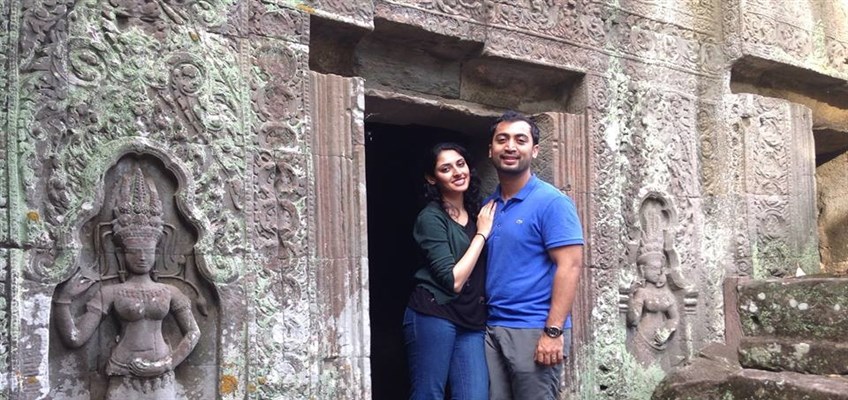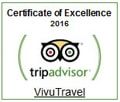Overview
Cambodia’s most famous tourist site is Angkor and the growth of Siem Reap can be largely attributed to the proximity of this UNESCO World Heritage site. The city, capital of the Province of the same name in the North West of the Country has existed for centuries though when the French colonialists arrived in the 19thCentury it was merely a village that had been under Thai (then Siamese) rule. Khmer architecture is not confined to this region and those interested in Khmer history are certain to look at Indochina tour packages because of what exists over Cambodia borders, especially to the west.
The French made an impact; their architecture remains an important feature in the place which has also been influenced by neighbours, primarily the Chinese. Angkor had been revealed to European eyes as early as the 16th Century and its ‘’reclamation’’ from the jungle early in the 20th Century resulted in the first overseas visitors arriving to see the 200 or so temples that were initially revealed. That marks the beginning of the modern life of Siem Reap.
Cambodia’s life under the horrors of Pol Pot and the Khmer Rouge meant that few visitors came until their defeat by the Thais with Pol Pot living in the jungle until his death in 1998. Approaching 20 years after his death Cambodian tourism is flourishing. Despite what happened in Cambodia in recent years the locals are friendly, inevitably smiling despite the fact that rural life in particular can be hard.

How to get there
There is an airport in Siem Reap, the second largest airport in Cambodia. It has domestic flights and direct international connections with many countries all across South East Asia. There are good bus services within Cambodia as well as connections with its neighbours; Vietnam, Thailand and Laos. There is a hydrofoil from Phnom Penh across Tonle Sap Lake which is a great experience among many on Cambodia tour packages.
The ease of connections with other countries makes Siem Reap and obvious inclusion in all Indochina tour packages.
Best time to visit
Siem Reap is never cold. There is a wet and dry season but temperatures won’t fall below 20C and average nearer 30C. The dry season starts in November and Cambodia tour packages tend to concentrate on the following months until the rains return in earnest in May.
The rainy season does not mean that there are constant downpours every day though there is likely to be an afternoon shower every day. Those taking Indochina tour packages have to contend with different climatic seasons around the calendar year so there is unlikely to be the chance of missing rain completely; it will rarely spoil a holiday.
Things to do
The Old French Quarter and the Old Market are ‘’must sees.’’ Tonle Sap Lake is included on all Cambodia tours with its fishing villages on stilts and the rice paddy fields keeping those that do not fish occupied.
There are a series of wats (temples) along the river around which there is a series of small villages between Wat Phnom Kron to the south and Wat Praeh En Kau Sei in the north. The town grew from the villages where the Siem Reap River enters Tonle Sap Lake. As with every community in Cambodia there are fascinating markets, day and especially night.
• Angkor Wat is the highlight of the immediate region if not the whole of Cambodia. Its five towers and the ultimate central one represent Mount Meru, the sacred home of Buddhists, Jains and Hindus. The carvings on the extensive walls depict Hindu mythology and tell stories from its origins and past.
• Angkor Thom, the inner royal city, was built at the end of the 12th Century. The temples are the highlight; Bayon, Baphuon and Phimeanakas. The Terrace of the Elephants and The Terrace of the Leper King are noteworthy. There are a series of entry gates and visitors walking through any of them will be delighted with what is revealed.
• A number of other temples within the Angkor Archaeological Park include Phnom Bakheng, Ta Keo, Ta Som, East Mebon, Pre Rup, Neak Pean, Ta Prohm, Preah Khan and Banteay Kdei.
• The Landmine Museum gives locals and visitors alike an insight into the immediate past while the War Museum tells more about the Khmer Rouge. Guides incidentally are usually war veterans. The horrors of Pol Pot are still relatively fresh in the mind and it is important that they are not forgotten as a lesson for the future.
• Angkor National Museum offers the background to the wonderful treasures that stand in the surrounding region. Whether you go before you visit the major temples or drop in after you have done your touring, the museum will certainly teach you more.
The natural and beautiful environment certainly deserves attention. Those living in the floating villages on Tonle Sap Lake lives as their ancestors have done for generations. It is essential that those on Cambodia tour packages enjoy the environment as well as the history and culture. There are wild animals in the forests, plenty of birds and certainly the rivers and waterfalls are spectacular.
Where to stay
The growth in the number of tourists has led to a huge increase in accommodation in Siem Reap. There are 5 star alternatives and plenty of guesthouse for those on a budget. There needs to be because numbers have swelled from half a million visiting Cambodia just over a decade ago to in excess of two million now.
Holiday makers who book any of the Cambodia tour packages will be able to select from a number of alternatives within the town and those arrangements will be made before arrival.
Summary
There is so much to see in the immediate vicinity of Siem Reap that it deserves a couple of weeks on its own. Not too many people have that much time but it is always possible to return for a second or even third time. Why not?





